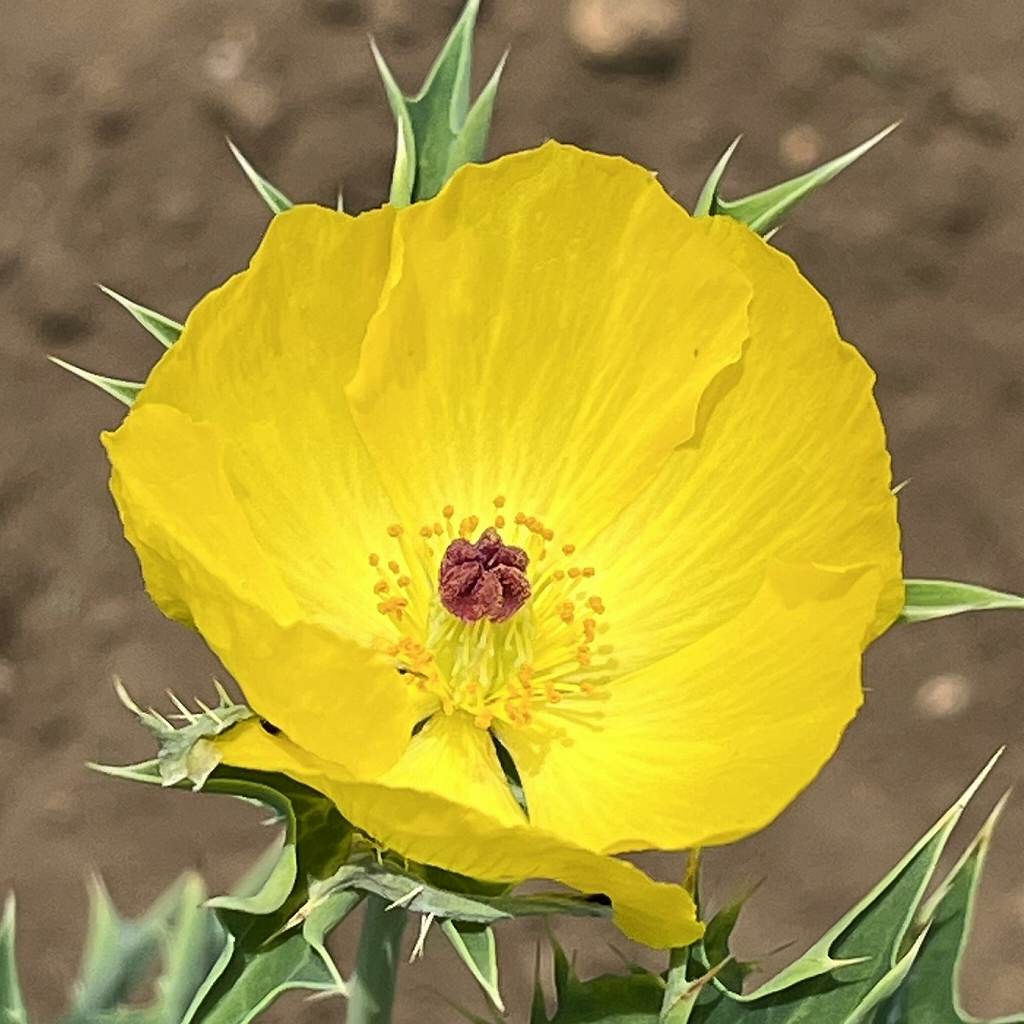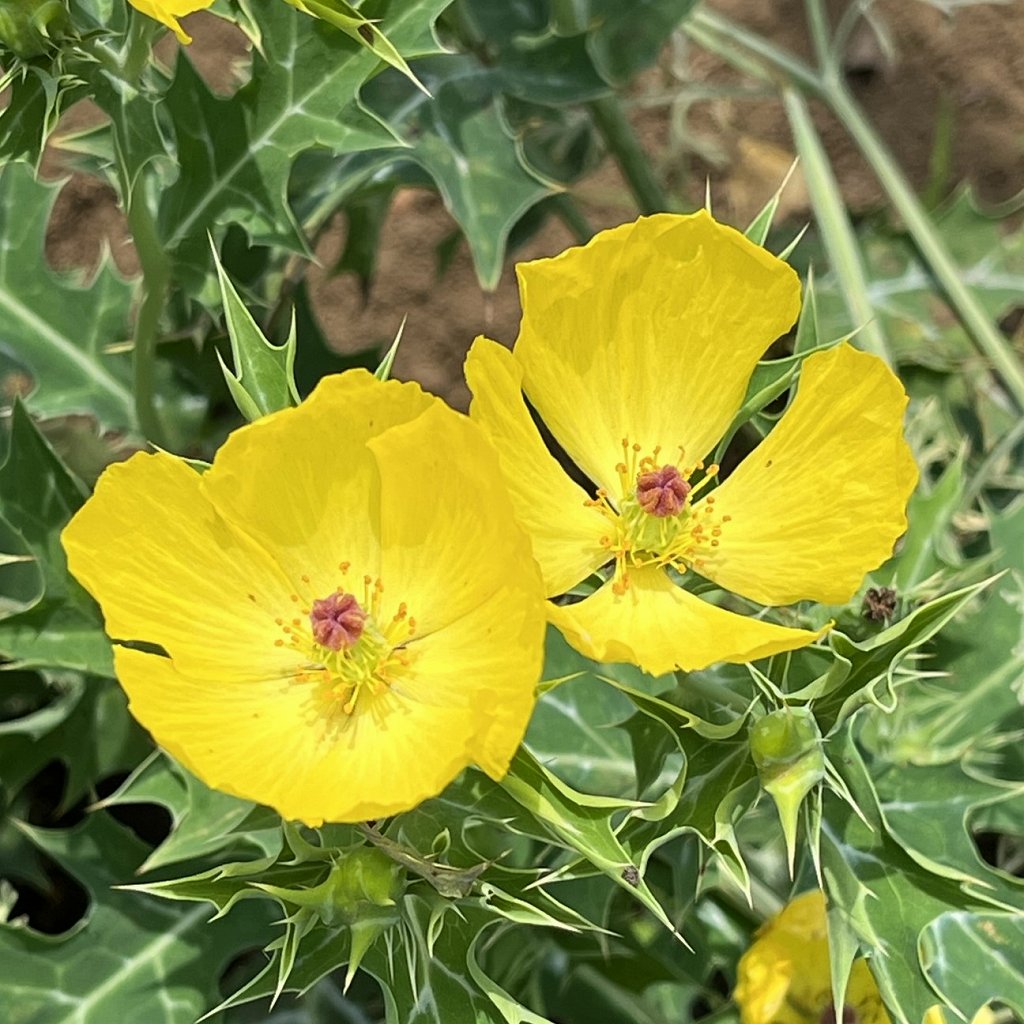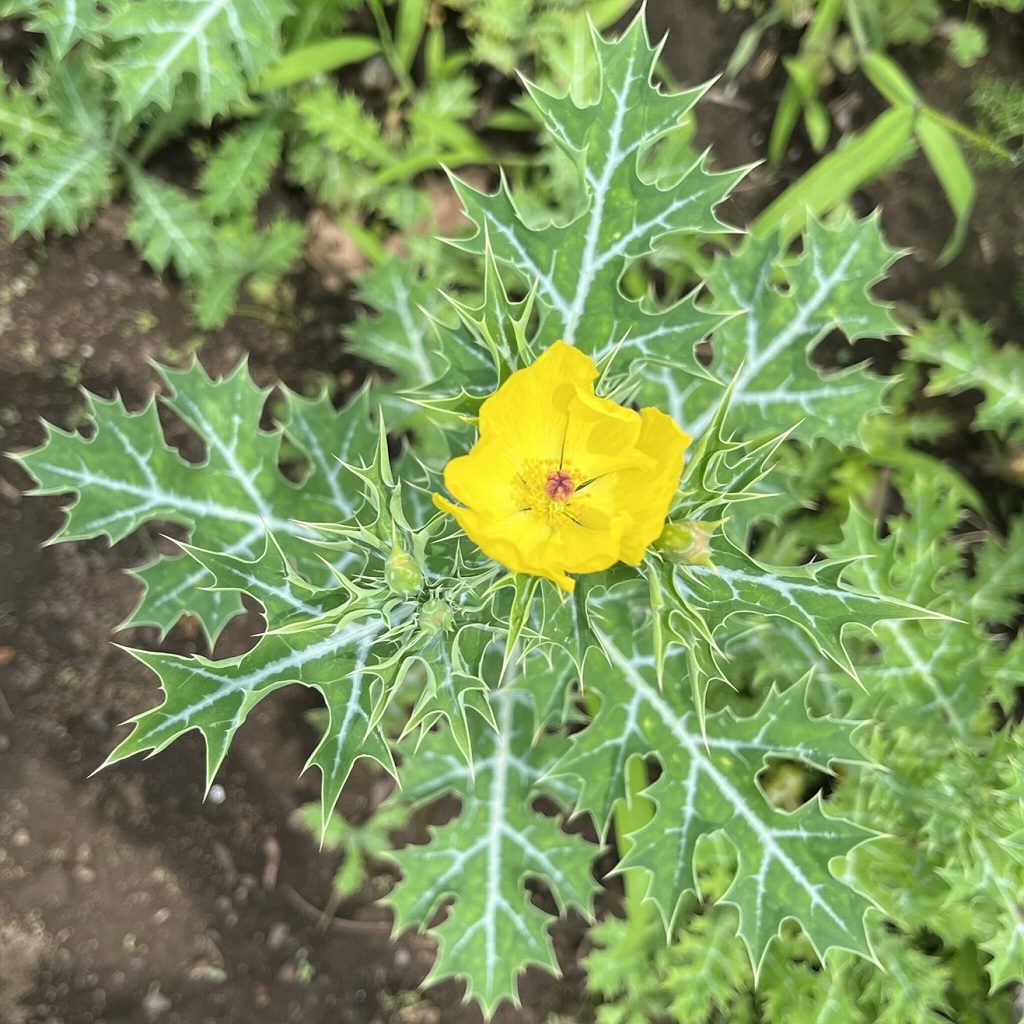アザミゲシは葉が羽状に深く裂けて鋭く尖り、花が薄い紙細工のよう。かつては鎮痛剤や下剤などに用いられる薬草でしたが、今は毒草です。
Mexican Poppy has leaves that are pinnately cleft and sharply pointed, and flowers that look like thin paperwork. It used to be a medicinal herb used as an analgesic and laxative, but now it is considered a poisonous herb.
【仮名】アザミゲシ
【和名】薊芥子, 薊罌粟
【英名】Mexican Poppy, Mexican Prickly Poppy
【学名】Argemone mexicana
【誕生】05/ 03
【開花】06, 07, 08月
【花色】Yellow





アザミゲシ
アザミゲシの概要
アザミゲシはケシ科の1年草です。原産地は北米のメキシコで、日本へは江戸時代に渡来。陽当たりの良い草地で自生し、鮮やかな黄色の花を咲かせます。インドでは火のお祭り「ホリカダハン」で捧げられる花。かつては鎮痛剤や下剤などに用いられる薬草でしたが、今は毒草です。
アザミゲシの名前
アザミゲシの名前の由来は、葉が羽状に深く裂け、鋭く尖って「薊」に似ている一方、花が薄い紙細工のように華奢な「芥子」に似ているから。ラテン語の属名アルゲモネは「目の回復」という意味で古くからの薬用に由来し、種小名メキシカーナは原産地の「メキシコ」を表します。
アザミゲシの姿形
アザミゲシの茎は太く直立し、上の方で分枝。葉は互生し、羽状に裂けて縁が鋭く尖り、白色の葉脈が走ります。花はお椀状に咲いて薄い花弁が4枚または6枚、雄しべが多数、雌しべの柱頭が赤色。花後の蒴果は楕円形で刺が生え、熟すと5つに裂け、褐色の丸い種子を散らします。
アザミゲシの利用
アザミゲシは茎や葉を傷つけると黄色の乳汁が染み出し、毒性のあるイソキノリンアルカロイドなどが含まれます。種子も強い毒性のあるサンギナリンなどを含有。姿形が食用の辛子に似ているため、混入による摂取で、脚が極度に腫れるなどの中毒症状を引き起こす恐れがあります。
Mexican Poppy
Mexican Poppy is an annual plant of the Papaveraceae family. The place of origin is Mexico in North America, and it was brought to Japan in the Edo period. It grows wild in sunny meadows and has bright yellow flowers. In India, it is the flower offered at the fire festival “Holika Dahan”. It used to be a medicinal herb used as an analgesic and laxative, but now it is considered a poisonous herb.
The Japanese name for Mexican Poppy means “Poppy like thistle”. This is because the leaves are pinnately cleft and sharply pointed, resembling a thistle, while the flowers resemble delicate poppy like thin paperwork. The Latin genus name Argemone is derived from ancient medicinal use in the sense of “recovery of the eyes”, and the specific epithet Mexicana represents the place of origin “Mexico”.
The stem of Mexican Poppy is thick and erect, branched at the top. The leaves are alternate, pinnately cleft, with sharply pointed edges and white veins running through them. The flowers are bowl-shaped and have 4 or 6 thin petals, many stamens, and red stigma. Capsules after flowers are elliptical and spiny, split into 5 when ripe, and brown round seeds are scattered.
Mexican Poppy exudes a yellow milky sap when the stems and leaves are damaged, and contains toxic isoquinoline alkaloids. The seeds also contain sanguinarine, which is highly toxic. Since the shape resembles edible mustard, there is a risk of poisoning symptoms such as extreme swelling of the legs if ingested by contamination.


